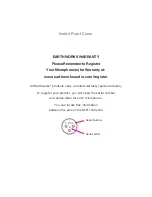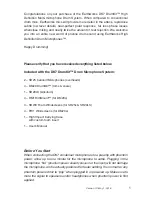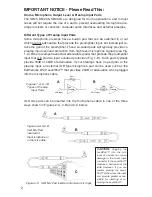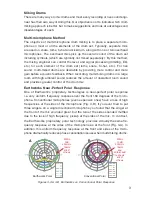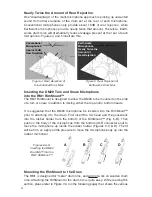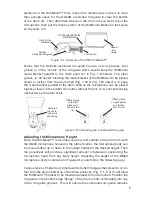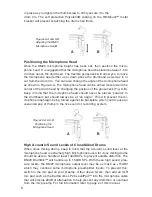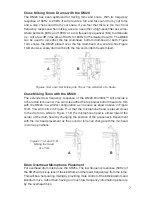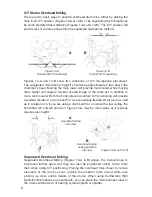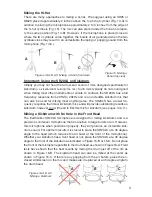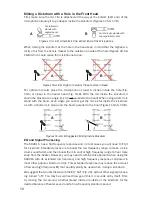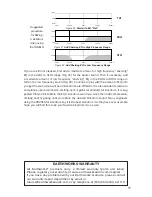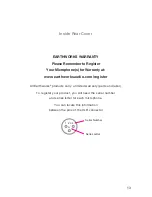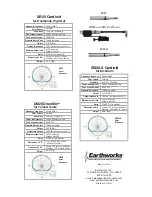
8
X/Y Stereo Overhead Miking
There are two basic ways to position overhead drum mics, either by placing the
mics in an X/Y position (Figures 12-A & 12-B) or by separating the microphones
by some predetermined distance (Figures 13-A and 13-B). The X/Y position will
provide less of a stereo image than the separated microphone method.
Figures 12-A and 12-B show two variations of X/Y microphone placement.
The suggested microphone “height” should be approximately 2 feet above the
drummer’s head. Moving the mics lower will provide more detail, while moving
them higher will capture a wider overall image of the drum set in addition to
more room sound. Both the horizontal and vertical X/Y positioning will provide
excellent results in a drum booth or an acoustically treated small room as well
as in a large room. If you are using a drum booth or a room with a low ceiling, the
horizontal X/Y version shown in Figure 12-A may be more ideal, as it typically
requires less height.
Figures 13-A and 13-B
A
Overhead miking
front view
B
Overhead miking
aiming positions
top view
A
B
Figure 12-A
Horizontal X/Y Positioning
Figure 12-B
Vertical X/Y Positioning
Separated Overhead Miking
Separated Overhead Miking (Figures 13-A & B) allows the microphones to
be placed further apart and they can also be positioned closer to the drum
than when using X/Y positioning. Placing the overhead mics closer to certain
elements of the drum set can reduce the ambient room sound while also
picking up more subtle details of the drums. When using Earthworks High
Definition Microphones as overheads, you can place the microphones closer to
the drums without fear of hearing cymbal splash or splatter.


